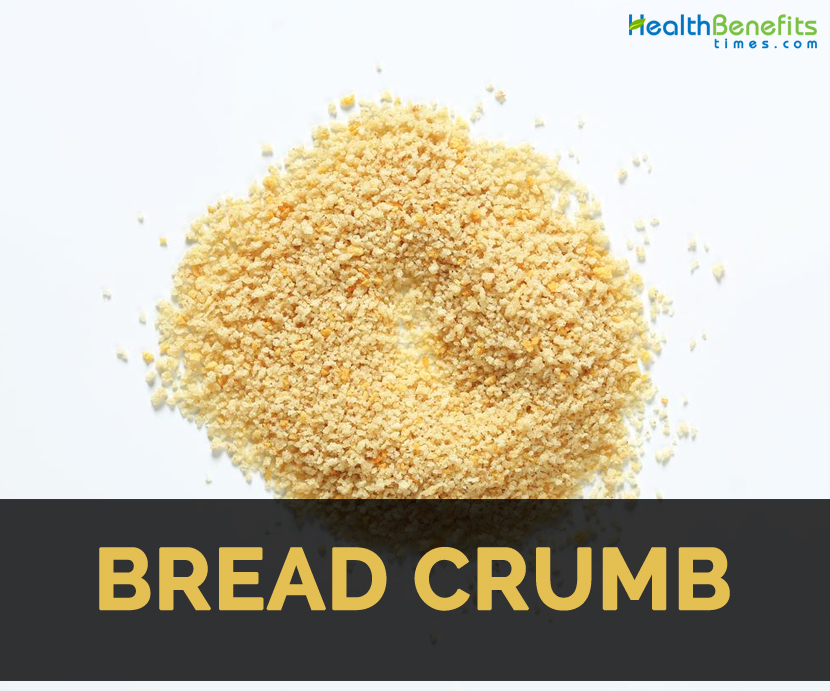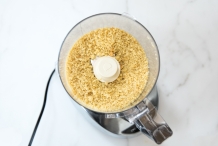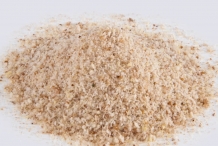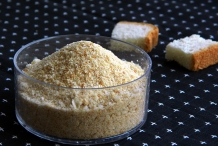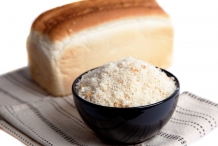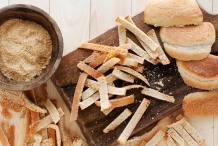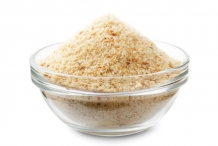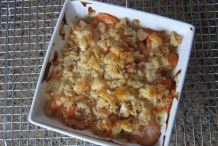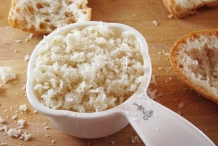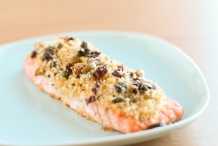Bread crumb also known as breadcrumbs are residue of sliced dry bread which is used for crumbing or breading foods, stuffing poultry, topping casseroles, meatloaves, thickening stews, inexpensive bulk to soups and to make a crisp or crunchy covering for fried foods notably breaded cutlets such as schnitzel and tonkatsu. A bread crumb of Japanese variety is called panko. It could be made with various bread varieties and are grounded more fine in comparison to flakier panko. Homemade breadcrumbs could be processed into larger grain but still lack distinct flaky texture that makes panko apart. Breadcrumbs are used as a crunchy topping on baked casseroles, as a binder for meatballs and as breading on fried foods. Dried breadcrumbs are fine and often used to crumb coat ingredients such as Scotch eggs, fish and croquettes before deep frying or is sprinkled on gratins to soak up oil and provide crunchy topping.
Recipes
Ingredients:
- 2 loaves (white bread with firm-texture)
- salt & freshly ground black pepper
- 1 cup of butter
Directions:
- Use a blender or food processor to evenly crumb the bread (It should not be like sand.)
- Don’t over process it, leave some texture.
- In a large pan, melt butter and add crumbs, pepper and salt.
- Stir till it is evenly coated.
- Over the medium heat, continue to stir (till the crumbs sound like sand when they hit the bottom of pan).
- Let it cool down.
- Store it in heavy duty plastic bags having zipper seals.
- Store them in a cabinet for up to six months.
How to Eat
- It is used for crumbing or breading foods, stuffing poultry, topping casseroles, adding inexpensive bulk to soups, thickening stews and meatloaves.
- It is also used to make a crisp and crunchy covering for fried foods such as breaded cutlets like schnitzel and tonkatsu.
- In Western cuisine, it absorbs grease or oil when fried.
- Add breadcrumbs to entrée, usual salad or dessert to add crisp and crunch.
- It is used as coating agents for deep fried and pan fried foods.
- Dried bread crumbs are used to coat deep fried foods.
- It could be sprinkled as topping on au gratin recipes before baking.
- It could be used as a topping for soups, pasta and salads.
- Add breadcrumbs to the mix of Bruschetta (basil, ripe tomatoes, olive oil, Spanish onion, pepper and salt).
References:
http://www.geniuskitchen.com/recipe/homemade-bread-crumbs-70154#activity-feed
https://en.wikipedia.org/wiki/Bread_crumbs
https://www.bbcgoodfood.com/howto/guide/how-make-breadcrumbs
https://www.tarladalal.com/glossary-bread-crumbs-222i
Awesome
Comments
| Bread crumbs Quick Facts | |
|---|---|
| Name: | Bread crumbs |
| Colors | Light pink or light brown |
| Shapes | Crumbly, sandy or even powdery (Texture) |
| Calories | 427 Kcal./cup |
| Major nutrients | Vitamin B1 (87.00%) Iron (65.25%) Carbohydrate (59.80%) Sodium (52.73%) Selenium (49.45%) |
| Name | Bread crumbs |
|---|---|
| Common/English Name | Breadcrumbs |
| Color | Light pink or light brown |
| Texture | Crumbly, sandy or even powdery |
| Major Nutritions | Vitamin B1 (Thiamin) 1.044 mg (87.00%) Iron, Fe 5.22 mg (65.25%) Carbohydrate 77.74 g (59.80%) Sodium, Na 791 mg (52.73%) Selenium, Se 27.2 µg (49.45%) Vitamin B3 (Niacin) 7.165 mg (44.78%) Manganese, Mn 0.993 mg (43.17%) Tryptophan 0.175 g (39.77%) Isoleucine 0.588 g (35.17%) Vitamin B2 (Riboflavin) 0.435 mg (33.46%) |
| Calories in 1 cup (108 g) | 427 Kcal. |


